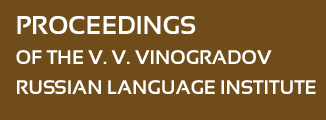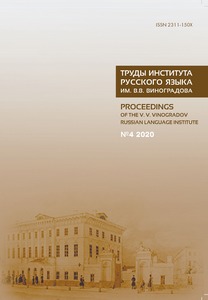HOW TO DESCRIBE UNIVERBES IN A DICTIONARY (problems of unit selection, interpretation, polysemy/homonymy)?
Abstract:
This paper deals with the description of univerbs in lexicographic aspect.
Univerbs reveal a surge of activity not only in colloquial, professional speech and jargons, but also in various public spheres of language, and are widespread in media discourse. Most of the lexical innovations formed as a result of the growth of univerbation productivity are not reflected by modern dictionaries. These nominative units have unique semantics, as they possess a general and indefi nite meaning, which is concretized by context and situation, in connection with which they have been called “sponge words” (such as минималка, максималка, нулёвка, запрещёнка).
The specificity of functioning of these words and the unusual nature of their semantic structure require special methods of lexicographic description. The problems connected with dictionary fixation of univerbals concern 1) selection of units, 2) ways of their interpretation and 3) differentiation of polysemy/ homonymy.
The selection of vocabulary for an explanatory dictionary of the literary language and for a special dictionary of univerbs is based on the criterion of word usuality. However, the transparency of the internal form of a noun-univerb (motivated by an attributive word combination) does not ensure the unambiguity of its semantic “filling”. The greatest variability is noticed in the interpretations of the univerbs with a general meaning: description of frequent concrete lexico-semantic variants of the word, description of concrete meanings and more general invariants, explication of the abstract semantics.
The article also considers the problem of differentiation of polysemy and homonymy of univerbs.


